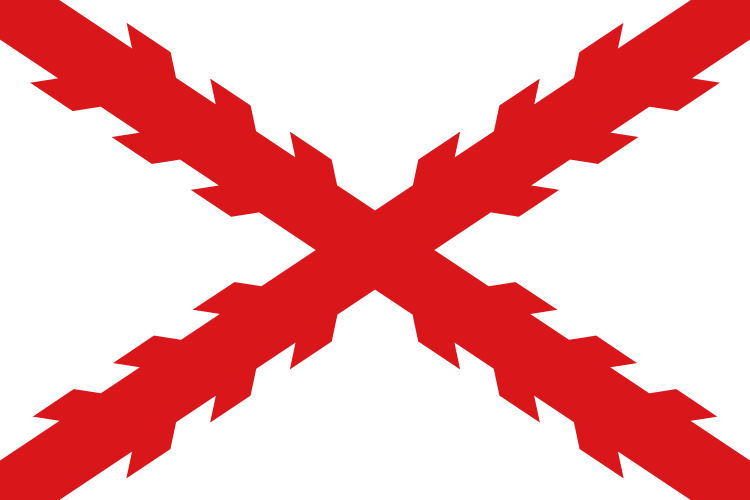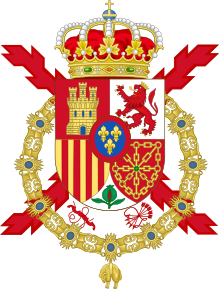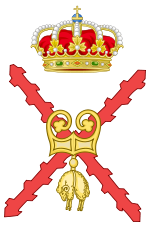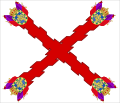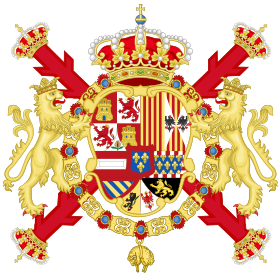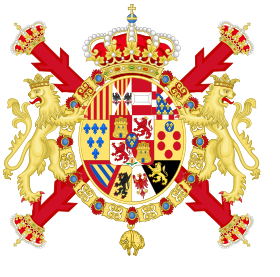

Il professor Lorenzo Monterovere e il suo ex assistente Luca Bosco erano andati molto d'accordo per anni, ma una lite improvvisa e furibonda, all'inizio del 2012, aveva portato alla rottura (almeno a livello pubblico), della loro collaborazione professionale.
Questo diverbio iniziò a causa di un dissenso politico, ma finì per toccare argomenti molto più pericolosi.
Si trovavano nell'ufficio del Professore, all'Università, e stavano commentando alcune notizie lette nei quotidiani.
Lorenzo era un deciso sostenitore di Mario Monti e della cancelliera Merkel, mentre Luca Bosco aveva espresso aspre critiche su alcuni provvedimenti dell'esecutivo in materia fiscale e finanziaria.
Normalmente il Professore evitava le discussioni politiche, essendo persona piuttosto riservata, ma in quel periodo c'era qualcosa di personale, forse riguardante suo nipote, che lo preoccupava e lo rendeva più irritabile e puntiglioso.
<<L'austerity è indispensabile per risanare la finanza pubblica>> aveva dichiarato Lorenzo, durante la famosa conversazione.
Luca aveva scosso il capo:
<<Questa non è austerity: è una macelleria sociale!
E magari il denaro andasse alla finanza pubblica: la verità è che quei soldi stanno andando a coprire i debiti privati delle banche e dei loro padroni, requisendo i risparmi dei cittadini, annientando la piccola proprietà immobiliare e la piccola impresa, distruggendo i servizi pubblici e precarizzando l'esistenza di tutti>>
Lorenzo lo aveva guardato con la sua solita aria di superiorità morale:
<<La tua è pura demagogia populista e non ti fa onore>>
L'assistente gli aveva puntato il dito contro:
<<Io sto facendo un ragionamento politico di carattere generale, perché non ho interessi di parte da difendere.
Cerca di seguire il mio discorso: appoggiando Monti, gli intellettuali come te stanno perdendo il contatto con la realtà popolare: il vostro progressismo è diventato puramente nominale, tecnocratico ed elitario, una specie di "sinistra al caviale" a cui non importa nulla dei cittadini in condizioni di disagio>>
Il Professore si era infuriato:
<<Ma come osi parlarmi in questo modo? Sembri uno di quegli invasati che credono alle panzane del blog di Beppe Grillo!>>
All'epoca nessuno poteva immaginare a quali risultati elettorali sarebbe giunto il movimento politico pentastellato, per cui l'accusa di "grillismo" risultava particolarmente pesante, soprattutto negli ambienti accademici.
Luca si era accalorato a sua volta:
<<Non sono tutte panzane, e comunque io so pensare con la mia testa e non appartengo a nessuna fazione politica. Dovresti saperlo...>> c'era una profonda amarezza nella sua voce <<...quando ero tuo studente mi incitavi ad essere anticonformista ed ora mi condanni perché lo sono diventato>>
Lorenzo aveva fatto un gesto stizzito:
<<Ti condanno perché ti comporti da sciocco! Non esistono alternative politiche credibili a Monti, alla Commissione Europea e al Fondo Monetario Internazionale!>>
Luca era profondamente deluso e questo lo aveva portato a pronunciare un discorso d'accusa molto pesante, certamente esagerato, ma non del tutto privo di fondamento:
<<Per te è facile predicare l'austerity dall'alto di una cattedra universitaria e di un castello!
Così come è facile per certi tuoi ricchi colleghi o studenti radical-chic, le cui famiglie hanno il cuore a sinistra, il portafoglio a destra e magari anche il conto in Svizzera, come De Benedetti e i suoi amici dell'elite globalista.
Gente privilegiata che crede di essere moralmente superiore agli altri, disprezza le persone comuni (di cui la sinistra al caviale ha tradito gli interessi e distrutto i diritti sociali), aborrisce il concetto di nazione (demonizzando i confini e privando la cittadinanza del proprio valore), e invoca l'immigrazione indiscriminata per poi usare i migranti come schiavi ed "esercito industriale di riserva" per tenere bassi i salari>>


L'atteggiamento del Professore passò dalla rabbia ad un risentimento cupo e vagamente minaccioso:
<<Dovresti stare più attento a quello che dici. Non è prudente fare certi discorsi. Qualcuno potrebbe interpretarli come un tradimento, e tu sai a cosa mi riferisco>>
Luca aveva colto subito l'allusione:
<<Forse sono imprudente, te lo concedo. Ma traditore mai!
Io non ho mai rinunciato all'Antica Via!>>
Lorenzo si era guardato intorno, per assicurarsi che non ci fossero orecchi indiscreti:
<<Tu non sei ancora un Iniziato agli Arcani Supremi. E non sai nulla dell'Antica Via>>
Raramente quei nomi venivano pronunciati in luoghi profani.
Arcana Arcanorum: gli Arcani Supremi! La Dottrina Segreta che si tramandava oralmente da millenni, fin dai primordi della civiltà...
Luca si era sentito umiliato dall'accusa del docente:
<<Non sono un Iniziato, è vero, ma ho condotto studi esoterici molto approfonditi.
Ho meditato a lungo sui testi dei Maestri, i quali dicono molto, a chi ha orecchie per sentire, e intuito per intuire.
E ne so abbastanza per poter affermare che preferisco l'Antica Tradizione agli intrighi di questa attuale Oligarchia di usurai!>>
Lorenzo aveva scosso il capo, con disgusto:
<<Tu non sai nemmeno lontanamente di cosa stai parlando. Ci sono ben altre forze in gioco, molto più potenti dell'Oligarchia Globalista, e molto più antiche.
Non sarai così ingenuo da credere alle assurdità dei complottisti sul Nuovo Ordine Mondiale? Sono invenzioni romanzesche di menti paranoiche!
E riguardo ai Maestri, tieni presente che Guenon ed Evola hanno semplicemente ritoccato le mitologie antiche con l'Antroposofia di Steiner, il tutto condito con la solita spolverata razzista di antisemitismo e antisionismo.
Ma l'Antica Via è un'altra cosa.
L'Ordine degli Iniziati agli Arcani Supremi è una realtà di ben più alta levatura: è il vertice che incorona tutto e sovrasta ogni cosa>>
Luca sapeva di camminare su un terreno molto pericoloso, però non riusciva a imporsi di tacere le sue perplessità:
<<L'Ordine degli Iniziati sarà anche di più alta levatura, ma non puoi certo negare che l'Aristocrazia Nera e l'Oligarchia Globalista siano venute a patti!>>
Le pupille degli occhi di Lorenzo si erano così dilatate da farli sembrare neri:
<<Nell'arco dei millenni, noi Iniziati abbiamo indossato molte maschere. Io ho molti titoli onorifici e appartengo a molte congregazioni, ma la mia fedeltà assoluta va soltanto all'Ordine degli Arcani Supremi.
Tieni bene a mente ciò che sto per dirti.
Sotto l'epidermide della Storia pulsano le vene degli Iniziati.
Persino un individuo meschino e profondamente arrogante come te può percepirne la potenza...>>

Non si erano mai avvicinati così tanto ai Misteri superiori.
<<Se siete così potenti, perché siete dovuti scendere a patti con i banchieri?>>
Il Professore apparve improvvisamente divertito:
<<Sai com'è la risposta, in questi casi, nei thriller? "Se te lo dicessi, poi dovrei ucciderti".
E sarà comunque saggio da parte tua non far parola con nessuno riguardo a questa conversazione e a tutto ciò che credi di sapere sul conto degli Iniziati>>
Luca sapeva che erano minacce fondate:
<<Non dirò nulla. Mi chiamo fuori da questa situazione! Preferisco non aver più a che fare con te e con tutti i tuoi intrighi!>>
Lorenzo sembrò sinceramente deluso:
<<Avevo sperato che tu un giorno potessi entrare a far parte dell'Ordine, magari insieme a mio nipote. Gli avresti potuto fare da guida.
Fino ad oggi pensavo che tu ne fossi degno.
E' triste ora accorgersi di avere tanto sbagliato...
Luca Bosco, il mio allievo più brillante e la mia più grande delusione!>>
L'ex allievo si era sentito punto nell'orgoglio:
<<Tuo nipote Riccardo è ancora più deludente, se proprio vogliamo essere sinceri ed onesti.
Il patto matrimoniale tra gli Orsini e i Monterovere è stato un fiasco, da qualunque prospettiva lo si guardi>>
Il Professore rimase impassibile, ma qualcosa nei suoi occhi parve pulsare, come una luce giallastra intermittente, che lo faceva apparire quasi una creatura inumana:
<<Al contrario! Tutto sta andando esattamente come avevo previsto.
La vita di Riccardo è stata un'Iniziazione fin dal principio: ha avuto tutto e ha perduto tutto, come Giobbe. Ma ha superato la Prova del Dolore.
Come vedi, la partita è appena iniziata, e i conti si faranno alla fine.
Niente è come sembra.
E ogni tuo giudizio è vano, Luca, perché tu sei ancora fuori dai giochi>>
Luca sapeva che il Professore stava dicendo la verità:
<<Preferisco rimanere fuori da questi "giochi", perché qui è come nel Trono di Spade: o si vince o si muore, e non ci sono vie di mezzo, non è così?>>
Lorenzo colse il riferimento e rispose con una citazione adeguata:
<<"Tu non sai niente, Jon Snow".
La situazione è molto più complessa.
Si vince o si muore? No: la morte non è affatto la punizione più lieve per chi trasgredisce.
Ci sono cose ben più terribili della morte e non occorre che io te lo ricordi.
Per ora è meglio che tu sparisca per qualche mese. Hai molte ferie arretrate, ti occorre una vacanza, aria fresca...
Ma non illuderti: non ti puoi più chiamare "fuori".
Nessuno può farlo, una volta che ha appreso dell'esistenza dell'Ordine degli Iniziati agli Arcani Supremi.
Ti lascerò qualche mese per riflettere, ma quando sarà giunto il momento, ti convocherò al Castello di Monterovere, assieme a mio nipote Riccardo, e allora saranno i Grandi Anziani a decidere>>
Era una minaccia ben precisa.
Luca seppe di essersi cacciato in una situazione terribilmente più grande di lui, e gli parve un incubo:
<<E se mi rifiutassi?>>
Il Professore parve divertito, come se avesse appena sentito una battuta umoristica, ma i suoi occhi rimanevano gelidi:
<<Immagino che avrai intuito fino a che punto noi Iniziati siamo disposti ad arrivare, per ottenere ciò che vogliamo.
Ti auguro di non dover mai verificare sulla tua pelle qual è, esattamente, questo punto>>
